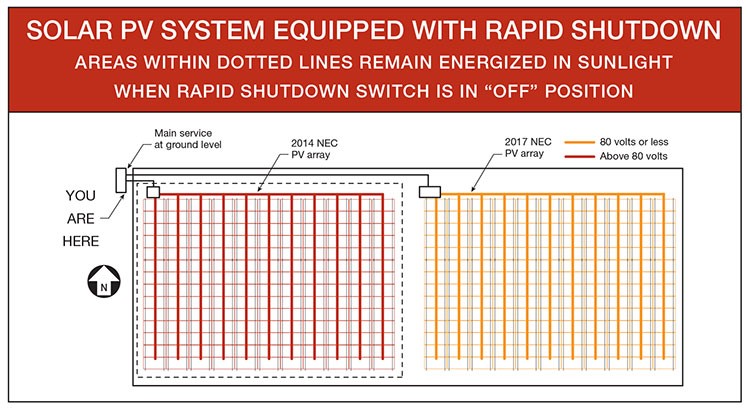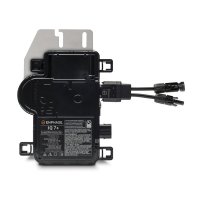
Most electricians and solar installers across the country are intimately familiar with the National Electric Code (NEC). Published every three years by the National Fire Protection Association (NFPA), the handbook aims to prevent electrical fires by fostering clarity and safety to national electrical standards. The first edition of the NEC was published in 1897 - a mere 20 years after the invention of the light bulb - and the NFPA has published the NEC since 1911. Today’s handbooks are behemoths. The NEC currently enlists over 5,500 panel members that put in over 35,000 person-hours to compile the 1,000+ page report. When all is said and done, the NEC publishes concise safety guidelines for a laundry list of different electrical equipment, including solar PV arrays.

NEC 2017 is particularly important for the U.S. solar industry because of its modifications to rapid shutdown requirements and its widespread adoption. As of December 1, a majority of US states abide by NEC 2017 (grey states in below chart). Each of these 26 states will also enforce section 690.12(B)(2) of the code beginning on January 1, 2019.

Defined as the ability to safely de-energize solar arrays in a defined timeframe, rapid shutdown enables first responders to confidently assess electrical hazards in burning buildings. Section 690.12(B)(2) states that controlled conductors within three feet of roof penetration must not exceed 80 volts within 30 seconds of initiating rapid shutdown. Here’s the exact phrasing:
(2) Controlled conductors located inside the boundary or not more than 1 m (3 ft) from the point of penetration of the surface of the building shall be limited to not more than 80 volts within 30 seconds of rapid shutdown initiation. Voltage shall be measured between any two conductors and between any conductor and ground.
So what exactly does this mean? Simply put, string voltages are now limited to 80Vdc upon rapid shutdown. In order to throttle voltage down to that level, one must use module-level power electronics or microinverters. In other words, module-level rapid shutdown is required for NEC 2017 compliance. For large commercial projects, this means incorporating higher material costs into 2019 proposals. Additionally, it’s worth noting that NEC 2017 will require updated labeling for rapid shutdown systems. For instance, if a system is expanded and separate arrays follow different NEC Codes, labels must clearly indicate which standards they follow (Figure 1). New labels should also assure first responders that all solar panels will be de-energized in sunlight after the rapid shutdown process has begun (Figure 2).

Figure 1

Figure 2
As solar installers and manufacturers adjust to these new requirements, it’s evident that innovation will accelerate to further reduce material costs. The SunSpec Alliance, a trade group formulating standards to enable plug-and-play systems, have established a standardized module-level rapid shutdown protocol for manufacturers. As these technologies progress, there is potential for solar module manufacturers to incorporate rapid shutdown capabilities, thus excising MLPE components. In today’s market, installers should rely on MLPE options as well as microinverters to achieve code-compliance.
